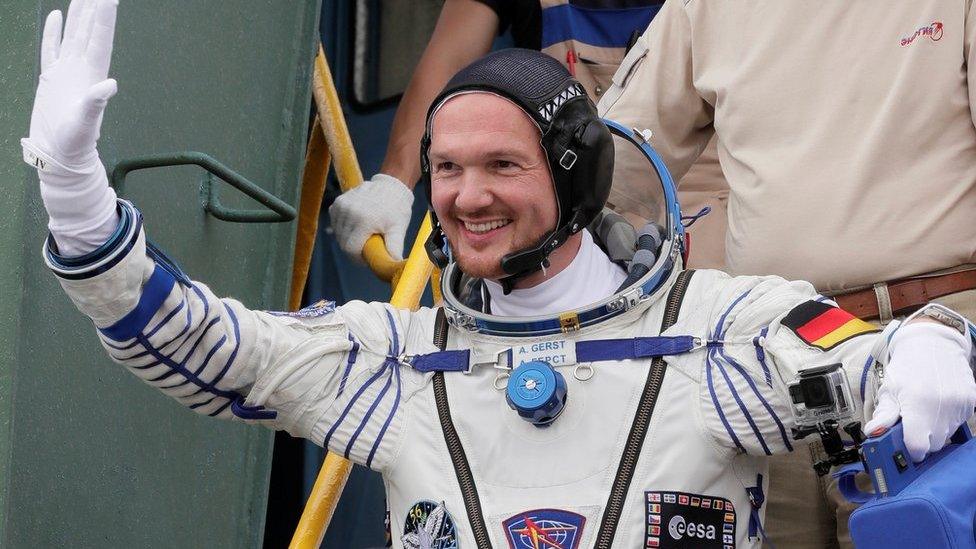Soyuz rocket: 'Faulty sensor' led to launch failure
- Published
The booster failure became apparent about 90 seconds into the October flight
A Russian Soyuz rocket capsule was forced to make an emergency landing shortly after launch last month because of a faulty sensor, investigators say.
Russian officials believe the component was damaged during assembly.
They warned that two other Soyuz rockets could be defective, and said additional checks have been introduced.
The rocket had been transporting two personnel, one Russian and one American, to the International Space Station (ISS) when they had to abort.
The crew members, Russian cosmonaut Alexey Ovchinin and American astronaut Nick Hague, were then recovered in good health from an escape capsule.
The incident, on 11 October, was the first serious launch problem by a manned Soyuz space mission since 1983.
The findings of an official investigation into the incident were presented at a press conference on Thursday.
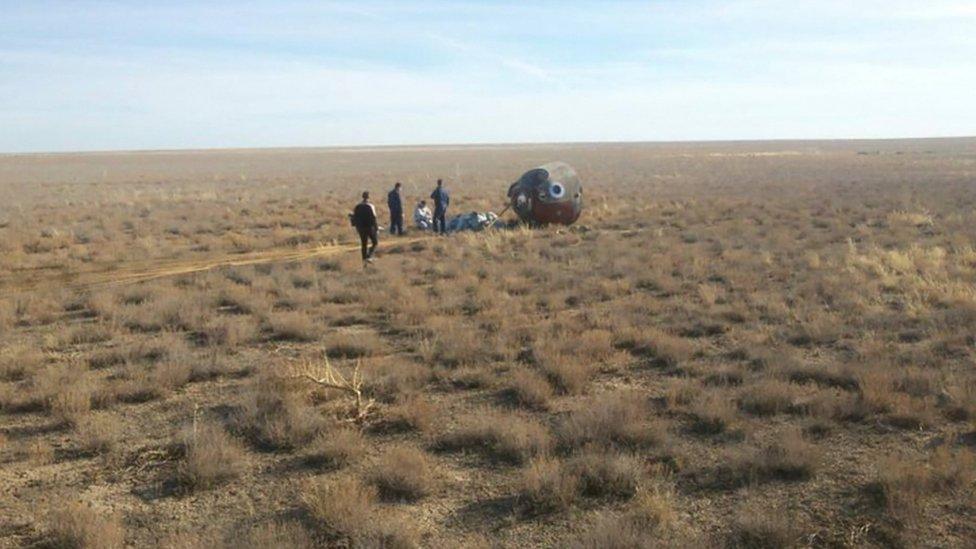
The rescue mission involved off-road vehicles and paratroopers in helicopters
Russian space agency Roscosmos said on Wednesday it hopes to resume manned missions with a three-person launch to the ISS on 3 December.
That mission was originally scheduled for later in December, but officials want to bring it forward to ensure the station is not left unmanned in autopilot when its current three-man crew depart for Earth.
What happened during the flight?
The Soyuz-FG rocket launched at 08:40 local time (02:40 GMT) from the Baikanour cosmodrome site on 11 October when the malfunction occurred.
About 90 seconds into the rocket's flight, the US space agency Nasa reported a problem with the booster rocket between the first and second stages of separating.
Live video of the astronauts inside showed them shaking violently with vibrations caused by the malfunction.
After about 114 seconds of flight, the emergency escape system sprang into action, separating the crew capsule from the rocket, which then entered "ballistic descent" before parachuting to earth.
The two crew members were then recovered by emergency workers near the Kazakh city of Dzhezkazgan, 400km (250 miles) north-east of the rocket launch site.


Despite their dramatic descent and landing, both men were recovered unharmed, the space agencies said.
What have officials said?
The Russian space agency Roscosmos immediately launched an investigation into the rocket failure.
Igor Skorobogatov, who headed the inquiry, said on Thursday that the issue was linked to the "deformation" of a sensor part.
"It has been proven, fully confirmed, that this happened specifically because of this sensor, and that could only have happened during the package's assembly at the Baikonur cosmodrome," he said.
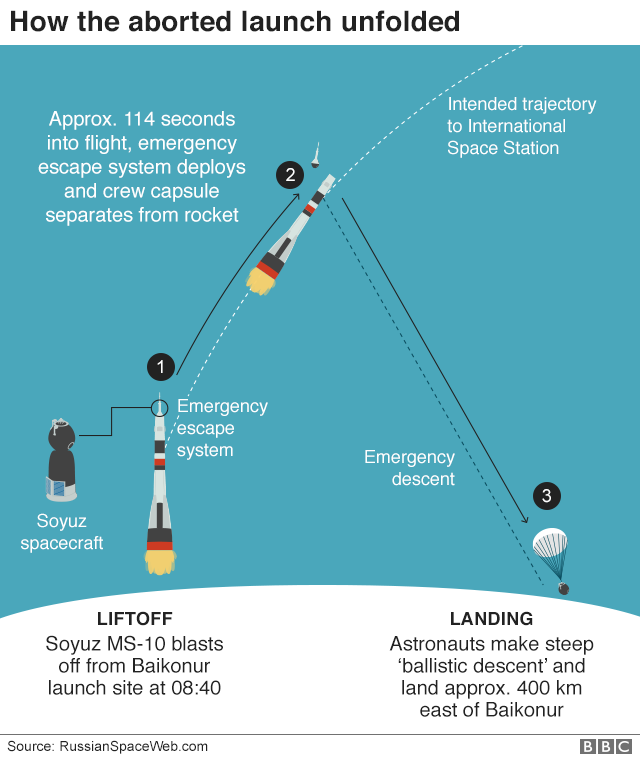

Officials believe the sensor's failure caused a booster rocket from the first stage to malfunction and hit a fuel tank, which led to the loss of stabilisation and the emergency landing.
Alexander Lopatin, the deputy head of Roscosmos, said that "appropriate law enforcement authorities" will now look into who was responsible for the assembly error.
Russian rockets are currently manufactured inside the country and then transported to the facility in Kazakhstan for assembly and launch.
Russia is the only country currently sending crews to the ISS, after Nasa's Space Shuttle programme ended in 2011.
Since then, Nasa has paid Russia for seats on its Soyuz rockets to ferry its astronauts to the station.
Is the programme safe?
Russia maintains its space program is safe despite a number of technical failures in recent years.
In August, a hole appeared in a Soyuz capsule already docked to the ISS which had to be patched after it caused a brief loss of air pressure. Officials suggested it may have been deliberate.
While space missions may often encounter technical difficulties, fatalities have been relatively rare.
The last fatal accident occurred in 2003 when Nasa's Space Shuttle Columbia broke up on re-entry into the Earth's atmosphere, killing seven crew members.
- Published5 September 2018
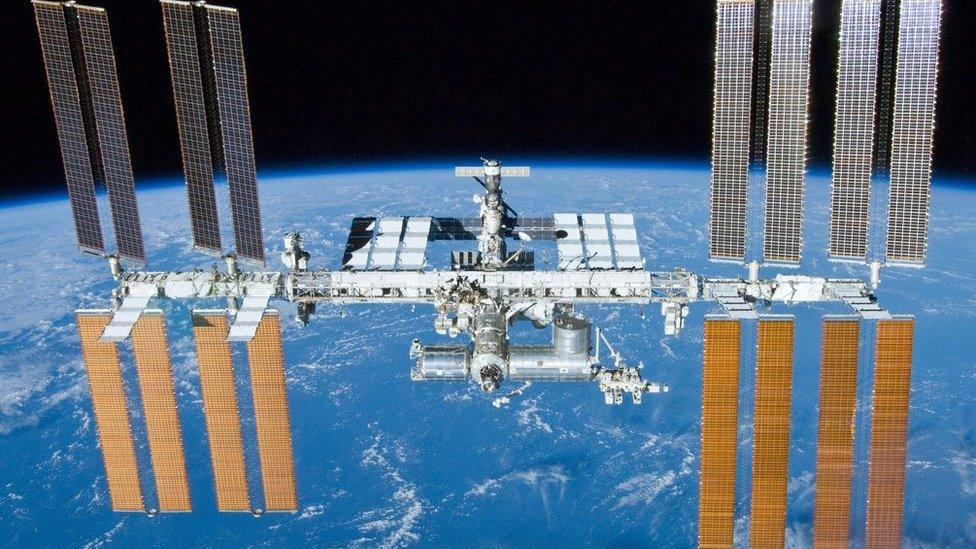
- Published3 June 2018
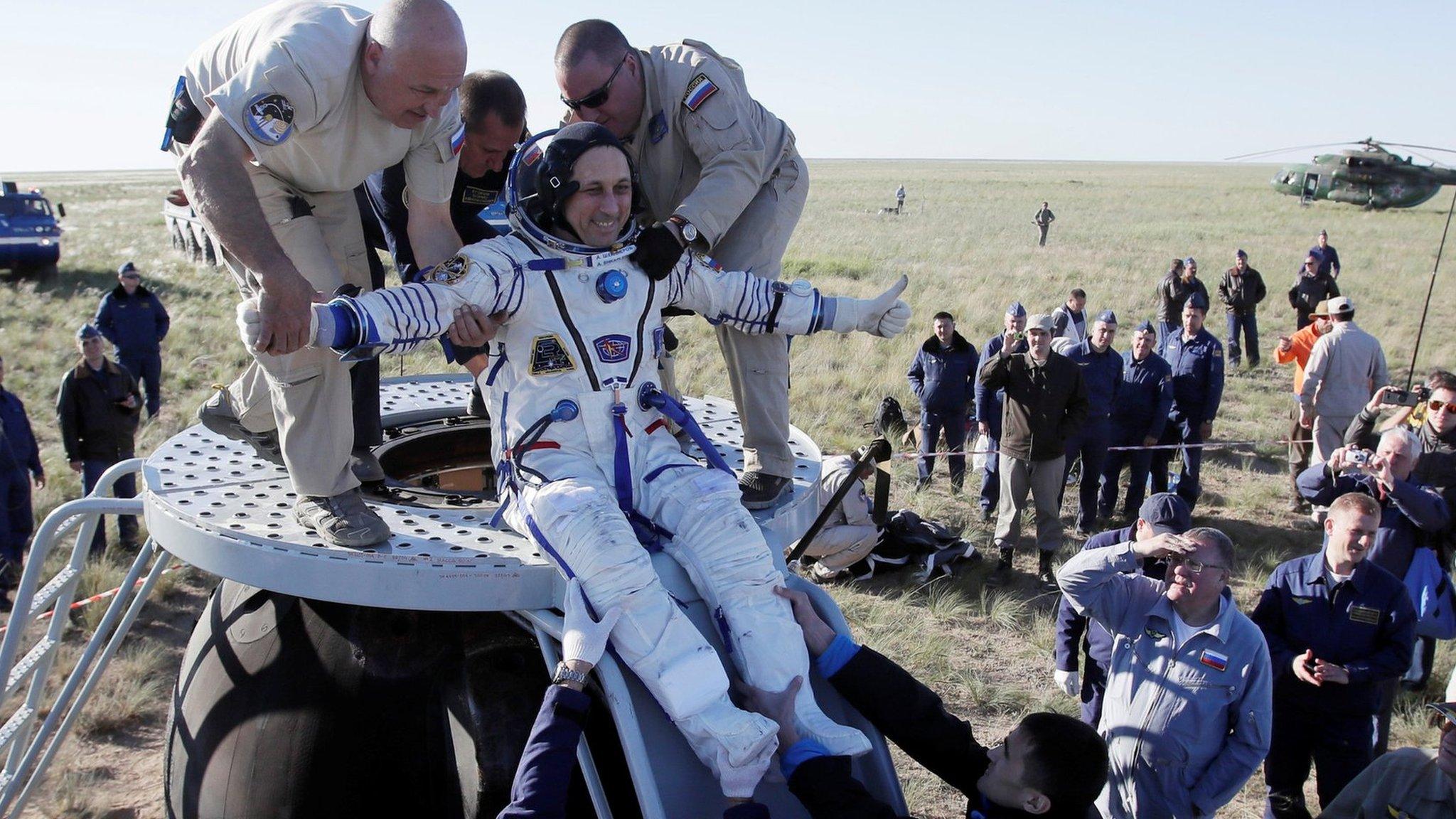
- Published6 June 2018
